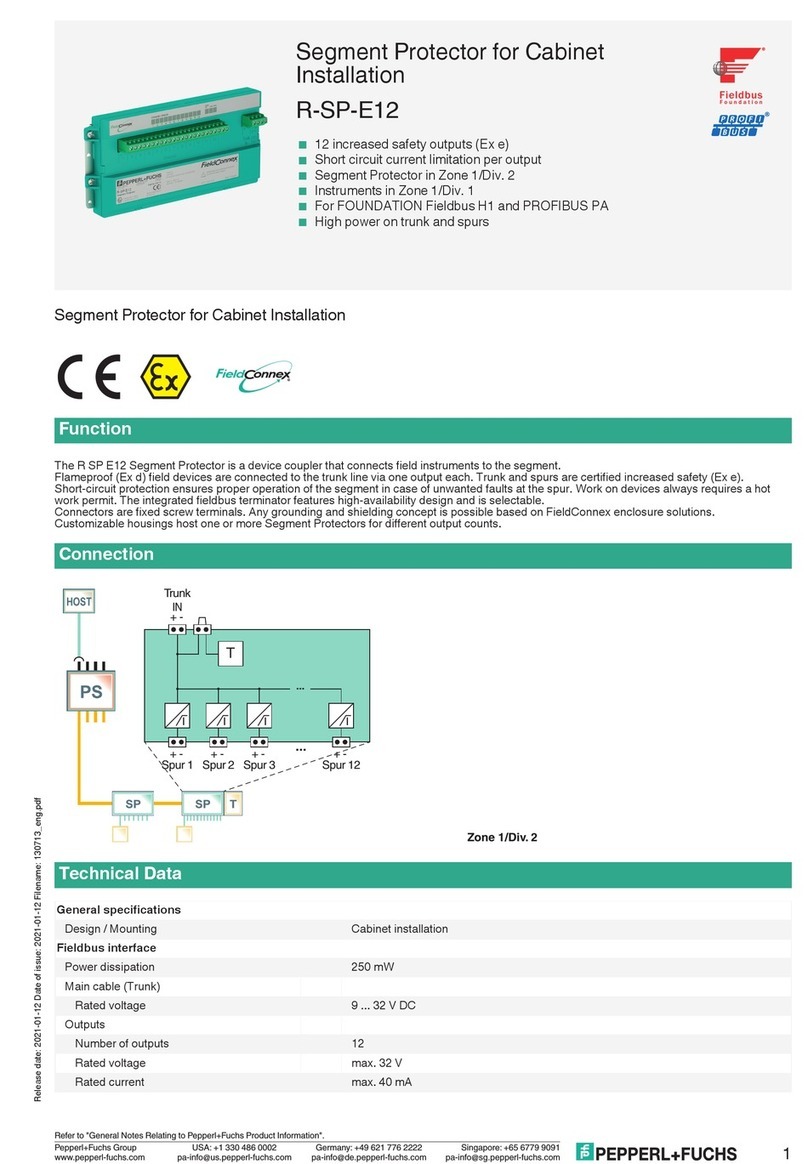
2023-03
8
Functional Safety M-LB-(Ex-)4000-System
Product Description
2 Product Description
2.1 Function
This manual describes solely the safety function and safe state of the surge protection barrier
as part of the surge protection system.
Surge Protection Barrier M-LB-42**(.M)
The device limits induced transients of different causes, e. g. lightning or switching operations.
The limitation is achieved by diverting the current to earth and limiting the signal loop voltage
during the duration of the overvoltage pulse.
The device consists of base module and protection module.The protection module
can be replaced without tools.
The device has a status indication at the front.
The device is mounted on a 35 mm DIN mounting rail according to EN 60715.
The DIN mounting rail is used to attach the device in the switch cabinet and is responsible
for grounding the surge protection barriers. The DIN rail mounting ensures a grounding
connection with the lowest possible resistance of the device.
Surge Protection Barrier M-LB-Ex-42**(.M)
The device limits induced transients of different causes, e. g. lightning or switching operations.
The limitation is achieved by diverting the current to earth and limiting the signal loop voltage
during the duration of the overvoltage pulse.
The device is used for intrinsic safety applications.
The device consists of base module and protection module.The protection module
can be replaced without tools.
The device has a status indication at the front.
The device is mounted on a 35 mm DIN mounting rail according to EN 60715.
The DIN mounting rail is used to attach the device in the switch cabinet and is responsible
for grounding the surge protection barriers. The DIN rail mounting ensures a grounding
connection with the lowest possible resistance of the device.
Danger!
Danger to life from wrong usage of the device
The protection of the safety loop against overvoltage is not the safety function of the surge
protection barrier.
The surge protection barrier protects applications and equipment against voltage surges
caused by lightning or switching operations.
The statement concerning the safety function of the surge protection barrier solely describes
the effect on safety loops in which the barrier is installed. The barrier acts in the safety loops
as a simple pass through element.






























